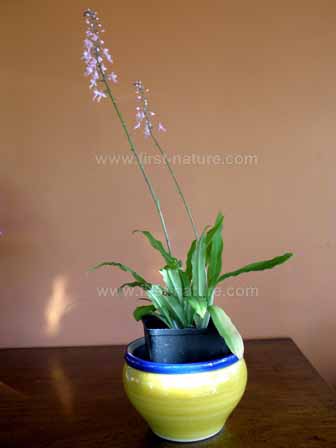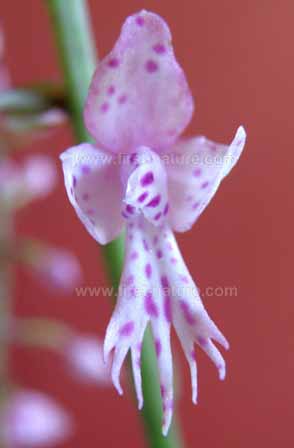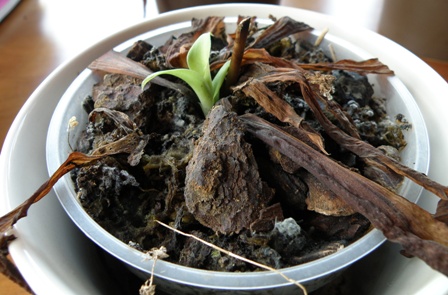Trees Birds Mammals Fish Amphibians Reptiles
Wild Algarve
Bookshop
Caring for Stenoglottis orchids

These are houseplant gems. For a start they don’t require the hothouse temperatures that many others do, which is a bonus given the soaring cost of energy. As long as they are kept moist and in a room or greenhouse where the temperature doesn’t drop below 5 degrees C, they will thrive.

Stenoglottis species, mostly terrestrial orchids (very occasionally epiphytic), are natives of southern Africa. Stenoglottis longifolia comes from Natal; its flowers are white to pale-pink with darker pink spots and they open gradually over a period of months on long flower-spikes. Once the flowers die down, new plants will appear beside the old ones and so it is possible to divide them and produce lots of pots of orchids from a single plant.
It is important to be aware that once the plant has flowered the leaves will die right down and then appear several months later ready for a new flowering season, so do not be alarmed at this stage and think that the entire plant has died. Just be patient and all will be well - new plants will emerge.

New plant growing from the rosette of dead leaves
When potting on the new plants, a mixture of bark and sphagnum moss (available from orchid nurseries) is ideal. The moss content will help to retain moisture, which is what this plant wants. It is perfectly all right to have the pots standing in water but, once the flowering is over the plant needs reduced amounts of water until the new leaves start to appear; at that time you should also add a little orchid food to the water from time to time.
This species is not widely available in garden centres or supermarkets but can be bought from specialist orchid nurseries who will respond to online or mail orders.
Other kinds of Orchids as House Plants...
What about our native wild orchids?
Yes, we have many native wild orchids throughout Europe and around 30 species in the UK. Most of them are rare, endangered or in serious decline due to the destruction of their natural habitats. They will not survive being dug up and moved either to gardens and greenhouses or to window ledges. It is also an offence under the Wildlife and Countryside Act to dig up any wild plants without the landowner’s consent.
Where to see wild orchids
There are many local and national nature reserves where wild orchids can be seen at the right time of year, and the network of local Wildlife Trusts can advise you on the best time to visit and also arrange for you to take part in some of the many tours that they organise during peak flowering times.